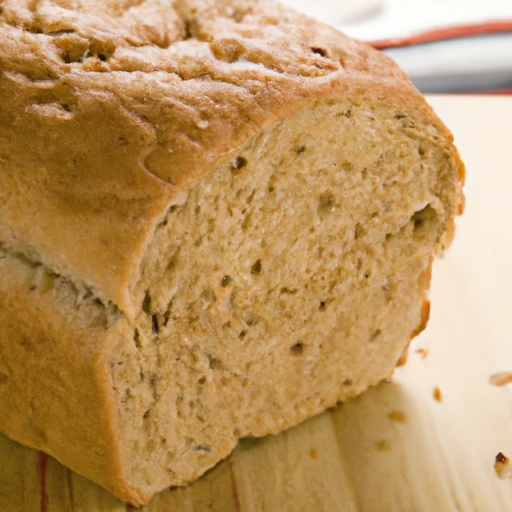Whole Wheat Bread
Description

Whole wheat bread is made from flour that contains all parts of the grain: the bran, germ, and endosperm. This results in a denser, fiber-rich bread that offers more nutrients than its white bread counterpart. It is a staple food that is versatile and can be used in various culinary applications. For those looking at recipes from different regions, it's important to note that measurements may be in cups (American) or grams (European), and oven temperatures in Fahrenheit (American) or Celsius (European).
Common uses
Whole wheat bread is commonly used as a base for sandwiches, as a side to soups and salads, and as an ingredient in various recipes that call for bread, such as stuffing or bread pudding.
Nutritional value
Calories
One slice (approximately 28 grams or 1 ounce) of whole wheat bread typically contains about 69 calories (288 kJ).
Protein
Whole wheat bread contains approximately 4 grams (0.14 oz) of protein per slice.
Fat
The fat content in a slice of whole wheat bread is usually around 1 gram (0.035 oz).
Carbohydrates
Carbohydrates are present in the amount of approximately 12 grams (0.42 oz) per slice, including dietary fiber.
Vitamins
It is a good source of B vitamins, particularly thiamin, riboflavin, niacin, and folate.
Minerals
Essential minerals found in whole wheat bread include iron, magnesium, phosphorus, potassium, and zinc.
Health benefits
Thanks to its high content of fiber and nutrients, whole wheat bread aids in digestion, supports heart health, and can help with weight management. The presence of whole grains has been associated with a lower risk of chronic diseases.
Potential risks
For individuals with gluten intolerance or celiac disease, whole wheat bread is not a suitable option due to its gluten content. Additionally, some store-bought varieties may contain added sugars and preservatives, which could impact health negatively if consumed in excess.
Common recipes
Whole wheat bread is used in a multitude of recipes, including hearty sandwiches, toast, bruschetta, croutons, and French toast.
Cooking methods
It can be baked in a conventional oven (350°F or 175°C), toasted in a toaster, or grilled for paninis and other hot sandwiches.
Pairing with other ingredients
Whole wheat bread pairs well with both sweet and savory toppings, such as peanut butter, fresh vegetables, cheese, lean meats, and fruit preserves.
Summary
Whole wheat bread is a nourishing ingredient that serves as a cornerstone in many diets around the world. With its rich nutritional profile and versatility in the kitchen, it is an excellent choice for those seeking a healthier alternative to white bread. Whether used in traditional recipes or as a component in innovative dishes, whole wheat bread provides both flavor and substance to any meal.